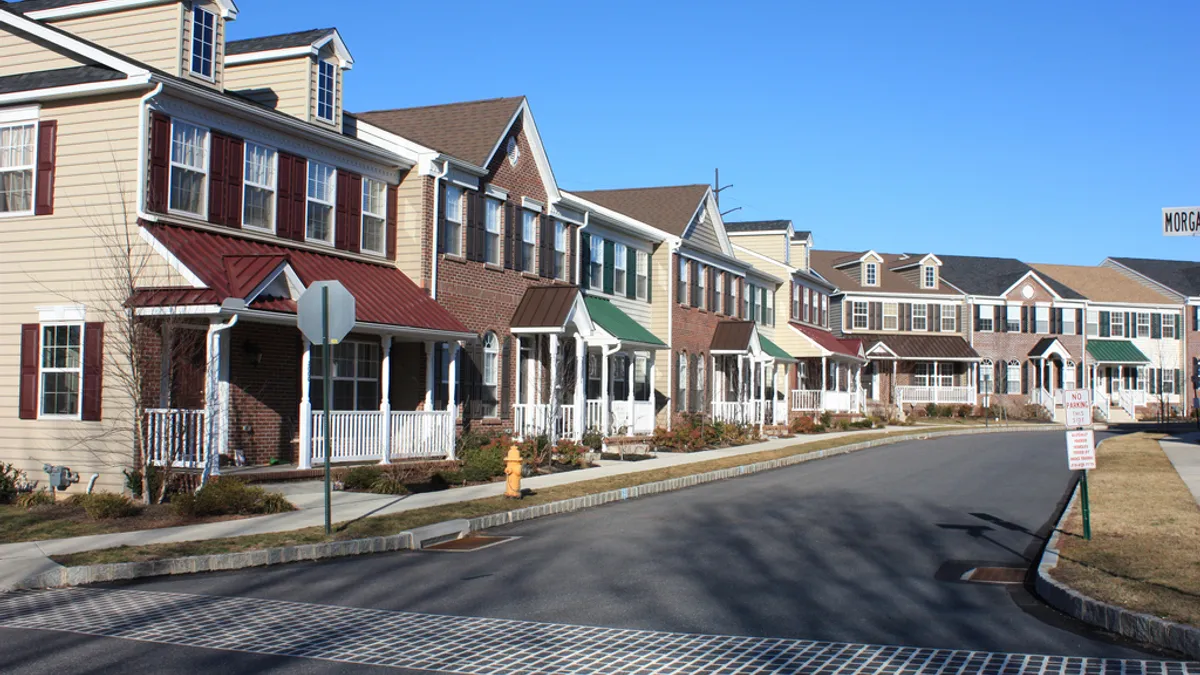Dive Brief:
- Electric panels in up to 48 million U.S. single-family homes will need to be upgraded to fully transition away from fossil fuels and use electricity for space and water heating, cooking, vehicle charging and other applications, according to new research from residential electricity research group Pecan Street.
- With an average cost of $2,000 for an upgraded panel, that represents a nearly "$100 billion impediment to residential electrification," the group said in a report issued Aug. 23.
- It is also an energy transition equity issue, with lower-income customers often unable to make that investment. But utilities can play a role in helping make upgrades possible through rebates or incentives, said Pecan Street CEO Suzanne Russo.
Dive Insight:
After Pecan Street issued its report, said Russo, the group heard of fossil fuel interests using its findings to portray electrification as too expensive. She later wrote a blog post calling that conclusion a misrepresentation and clarifying that "we support full residential electrification."
"It does make it hard to do this kind of policy research," Russo said of the fossil fuel industry's response, adding it can be "dangerous" to put out cost estimates regarding electrification. But the conclusions of the new research stand: For the United States to fully electrify the residential sector, tens of millions of homes will need an electric panel upgrade.
Between 35 million and 45 million homes in the U.S. can already electrify with existing panels, and as of 2015, the group says, about 25% of households were already fully electric.
"The point of the report is, electrification is an imperative, and particularly with the Biden administration setting a national goal to electrify all transportation," Russo said. "Electric panels are part of that infrastructure, and that's really a blind spot in conversations around electrification."
President Joe Biden wants to see half of all new passenger vehicle sales in the United States be electric by 2030, and Congress is considering an infrastructure bill that includes billions for vehicle charging.
Still, experts say most charging will be done at home.
Electric vehicles have "the highest potential nameplate load of any electrical load in the home," Pecan Street's report noted. "This combined with the coming wave of EV adoption means they are likely to be one of the most common triggers for an electric panel upgrade."
Part of the solution, Russo said, is making sure funding bills for electrification efforts include residential panels as a line item whenever possible. And regional policies, including utility programs or local and state government initiatives, should pursue incentive structures and rebate programs which are not regressive and "allow electric panel upgrades to be a part of the cost calculation for complying with electrification policies."
Pecan Street says building and electrical codes also need to be updated to prepare for electrification. "We found these codes are not sufficient, nationally," Russo said. The group wants to see the adoption of codes that require a minimum panel size of 200 Amps for all new construction homes, which they say would allow full electrification in the future.
During construction, the difference in cost between installing a 100-amp and 200-amp panel is "only a few hundred dollars, but large builders can realize savings from installing the minimum size electric panel at scale across all their new builds," Pecan Street's report pointed out. Currently, the minimum panel size for a home is determined through a calculation set by the National Fire Protection Association and National Electric Code.
Panel upgrade assistance could come through utilities, said Pecan Street Chief Technology Officer Scott Hinson, despite that equipment being on the customer side of the meter. However, the group's research turned up no existing examples of utility incentives for panel upgrades. The Edison Electric Institute did not respond to a query about such programs.
Panel upgrade programs could be structured similar to weatherization programs for low-income homeowners, or panel incentives could even be made available through existing weatherization programs. Utilities already offer rebates for air conditioners, efficient appliances and lighting upgrades, and "there could be an expansion in scope to include something like this," Hinson said, structured in a way to prioritize low- and moderate-income homes.













